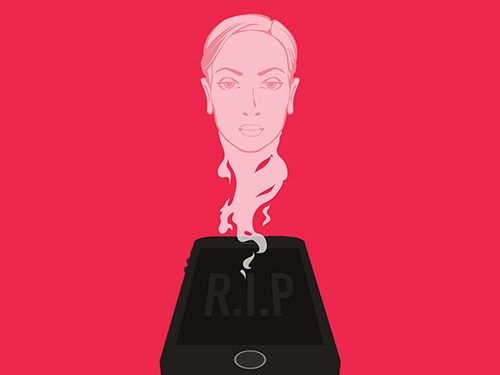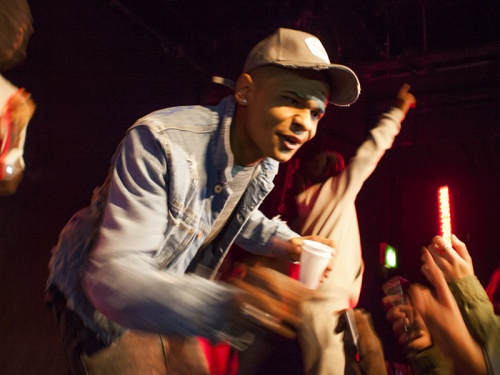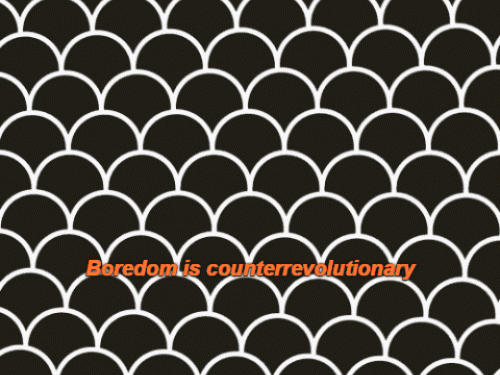Who's Jamming Who
GIFs, Interruptions and 21st Century Counterculture
Artist Matthew de Kersaint Giraudeau recently led an ICA Workshop on digital screen practices, GIF-making, and the notion of ‘culture jamming’ for a group of young creatives. Using freely available online tools, the result was a series of images, memes and GIFs that were collectively edited into a digital artwork using the multimedia publishing platform NewHive.
Participants in the workshop included Holly Alfonso & Sophie Leigh, Audrey Kadjar, Rhianne Sinclair-Phillips, Nella Janiika Aarne, Astrid Korporaal and Nick Santos-Pedro. In this post, Matt reports on the activities of the workshop, and discusses the techniques of appropriation and culture jamming that set the precedent for contemporary meme culture.
The question Who’s Jamming Who? relates to a history of ideas that includes Duchamp’s readymades, the détournement of the Situationists, and the culture jamming works of Gran Fury and the Billboard Liberation Front.
Appropriation and ‘remixing’ have always been a part of (counter)cultural practices such as art and filmmaking, activism and hacking. But these techniques are also used in advertising, marketing and other corporate practices that operate within the attention economy. With the boundaries blurring between art and advertising, creativity and monetisation, the workshop asked whether we can we work the tools forced upon us by digital corporations to interrupt the flow of attention in a productive and creative way.
Three techniques of appropriation from the 20th century set the precedent for contemporary meme culture: readymades, détournement and culture jamming.
Duchamp's Fountain started life as an interruption. A porcelain urinal, turned upside down, signed R. Mutt, and entered into the open exhibition of the Society of Independent Artists. In a magazine article [PDF] written by Duchamp in defence of the piece, he described the process:
"He took an ordinary article of life, placed it so that its useful significance disappeared under the new title and [...] created a new thought for that object."
This was a new kind of art practice - where the artist’s role was choosing and changing rather than creating and making. In the 1960s, the piece became famous and was recuperated into mainstream culture. The original urinal used by Duchamp was lost, so he commissioned 17 replicas which were sold to various museums around the world. You can think of Duchamp’s Fountain as a meme - an idea that can be deployed in different ways and different places, slightly modified but instantly recognisable to a certain set of people.
Détournement is a french word that means "rerouting" or “hijacking". In the 1960s, the French Situationists used the term to describe a way of appropriating and changing pop culture to make political statements. The idea of détournement influenced the punk aesthetic in the 70s, as it sat easily with the punks' ideas about music; that anyone could learn the same three guitar chords and form a band, and anyone could cut pictures out of a magazine and make a collage.
Culture jamming was a term coined in the 1980s by Don Joyce, of the sound collage band Negativland. Negativland were the first band to release an album that used samples from other people's music. It wasn’t a coincidence that they were also the first people to be sued for sampling. The phrase culture jamming comes from the idea of radio jamming - the idea that public frequencies can be pirated and subverted to disrupt dominant frequencies.
My favourite culture jam is by Gran Fury, the artist wing of ACT UP - a gay rights protest movement that started in the 1980s to fight against the culture of silence surrounding the AIDS epidemic in America. Gran Fury appropriated the aesthetic of a popular United Colours of Benetton clothing advert to make a political statement about HIV and AIDS as a political crisis. They used their designs as bus adverts around New York City, and even made a television ad with the same message.
In the workshop we spent the day making new images and GIFs using freely available, online tools, and then combined them into a digital artwork using the multimedia publishing platform NewHive.
This blog will explore a few of these different tools and their applications.
Meme Generator
Meme Generator is a website that allows you to make a kind of meme known as an ‘image macro’ - normally a picture of cartoon character, or a still from a well-known film, with text on the top and bottom forming a joke or clever phrase. The site is both an archive of user generated memes (some good, mostly bad) and a meme-making tool. You can choose from already uploaded images to which you can add text, or upload your own image before adding text.
Pixlr
Pixlr is an online image editor, loosely modelled on Adobe’s Photoshop but completely free to use, and operated from within your web browser. We used Pixlr to edit images before turning them into image macros and GIFs.
Makeagif
With Makeagif you can make GIFs from uploaded pictures or videos, Youtube links or using a webcam. Just like Meme Generator, Makeagif acts as an archive of user-generated GIFs, as well as a way of making them.
New Hive
NewHive is an online multimedia publishing platform and a social media website. You can quickly design multimedia webpages by adding text, images, GIFs, sounds and videos from Youtube or Vimeo. These webpages are then available for anyone to see, and they can be made available to be ‘remixed’ by other NewHive members.
NewHive is an active part of the digital art scene, regularly commissioning new pieces by members of the site, running a blog where they interview artists about their use of digital media and working on irl exhibitions that utilise online formats such as the GIF.
Unlike Memegenerator and Makeagif, NewHive sees their users as named artists rather than anonymous content generators. NewHive.com is structured like a social media site, with user profiles linked directly to the artworks, so that artists can be recognised for their work.
In the afternoon of the workshop we combined a selection of GIFs and images—some that we had made and some that we had appropriated from elsewhere—to collectively make a NewHive artwork.
This artwork is being ‘advertised’ on the ICA website, from 22 August to 2 September where the GIFs that we made in the workshop will pop up on your screen. For me, this a particularly appropriate way for viewers to find our collaborative artwork, placing it in the murky area between art, the attention economy, and advertising. ■
Matthew de Kersaint Giraudeau’s workshop culminates in a collaborative digital artwork, where GIFs made by the participants will pop-up on the ICA home page (22 August-2 September 2016).
This article is posted in: Articles, Blog, Events
Tagged with: Gif, Gifs, Digital, Workshop, learning, Young ICA, Counterculture, Holly Alfonso & Sophie Leigh, Audrey Kadjar, Rhianne Sinclair-Phillips, Nella Janiika Aarne, Astrid Korporaal, Nick Santos-Pedro, Matthew de Kersaint Giradeau














